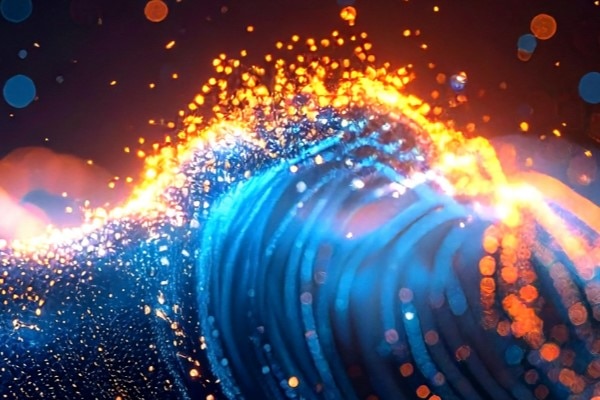-
Featured services
Think beyond the robots
The successful integration of AI and IoT in manufacturing will depend on effective change management, upskilling and rethinking business models.
Read the blog -
Services
View all services and productsLeverage our capabilities to accelerate your business transformation.
-
Services
Network Services
-
Services
Cloud
-
Services
Consulting
-
-
Services
Data and Artificial Intelligence
- AI and Intelligent Solutions
- Data/AI Strategy and Program
- Data Engineering and Platforms
- Data Governance and Management
- Data Visualization and Business Decision
- GenAI Consulting
- GenAI Platforms
- GenAI Industry Services
- GenAI Infrastructure Services
- GenAI Value Transformation
- View Data and Artificial Intelligence
-
Services
Technology Solutions
-
Services
Global Data Centers
-
Services
CX and Digital Products
-
Services
Application Services
-
Services
Sustainability Services
-
Services
Digital Workplace
-
Services
Business Process Services
-
Services
Generative AI
-
Services
Cybersecurity
-
Services
Enterprise Application Platforms

Accelerate outcomes with agentic AI
Optimize workflows and get results with NTT DATA's Smart AI AgentTM Ecosystem
Create your roadmap -
-
-
Insights
Recent Insights
-
The Future of Networking in 2025 and Beyond
-
Using the cloud to cut costs needs the right approach
When organizations focus on transformation, a move to the cloud can deliver cost savings – but they often need expert advice to help them along their journey
-
Make zero trust security work for your organization
Make zero trust security work for your organization across hybrid work environments.
-
-

Master your GenAI destiny
We’ll help you navigate the complexities and opportunities of GenAI.
Explore GenAI -
-
Master your GenAI destiny
We’ll help you navigate the complexities and opportunities of GenAI.
Explore GenAI -
Discover how we accelerate your business transformation
-
About us
CLIENT STORIES
-
Liantis
Over time, Liantis – an established HR company in Belgium – had built up data islands and isolated solutions as part of their legacy system.
-
Randstad
We ensured that Randstad’s migration to Genesys Cloud CX had no impact on availability, ensuring an exceptional user experience for clients and talent.
-
-
CLIENT STORIES
-
Liantis
Over time, Liantis – an established HR company in Belgium – had built up data islands and isolated solutions as part of their legacy system.
-
Randstad
We ensured that Randstad’s migration to Genesys Cloud CX had no impact on availability, ensuring an exceptional user experience for clients and talent.
-

Everest Group PEAK Matrix® Assessment
NTT DATA is a Leader and Star Performer in the Everest Group Sustainability Enablement Technology Services PEAK Matrix® Assessment 2024.
Get the Everest report -
- Careers
Topics in this article
There’s a good chance you’re reading this blog at home, not at the office. Nearly two-thirds of employees around the world are now following a hybrid work model or working remotely full-time.
Their employers have not only created an enjoyable employee experience but are also seeing the sustainability-related benefits — including cutting down on the emissions generated by daily commutes and limiting energy consumption by reducing their physical office space, leading to lower electricity demand for lighting and heating.
These practices will reduce your organization’s environmental impact and bolster your reputation, too.
But what about the devices your employees use? As devices become outdated or broken, they often end up in landfills, contributing to environmental pollution and the loss of valuable materials. The constant energy demands of charging these devices also leave large carbon footprints, especially if powered by nonrenewable energy sources.
Moreover, the manufacturing of digital devices consumes large volumes of natural resources and generates greenhouse gas emissions. For instance, laptops emit 75%–85% of their lifetime emissions — about 330kg of carbon-dioxide equivalent — during manufacturing.
Sustainable device as a service (DaaS) presents a way of optimizing IT asset management and supporting the circular economy by extending device lifecycles in your organization.
How does sustainable device as a service work?
Sustainable device as a service reduces the demand for new devices by extending the life of your existing hardware. There are several ways to achieve this, and a good place to start is by refreshing your device refresh strategy.
Instead of determining the refresh schedule of a device by age, sustainable DaaS proactively monitors your employees’ laptops and other devices for performance degradation and usage thresholds to determine if a device needs to be refreshed.
Then, at the time of refresh, refurbished devices are provided to users. Redeploying devices in this way reduces ewaste and the environmental impact associated with the production of new hardware.
This practice aligns with the principles of the circular economy, as it promotes resource reuse and waste reduction. And, if you’re the CIO, you deal with fewer business disruptions and save money because devices are replaced only once their performance degrades, not simply because they are a certain age.
Go proactive with device monitoring
For the sustainable DaaS model to work as intended, continuous device monitoring and proactive intervention are key. Understanding the health and performance of devices so you can make informed decisions about refurbishing and redeploying hardware
Your IT team can use monitoring tools to detect early signs of slow processing speeds, overheating or hardware malfunctions — and make timely interventions and refresh or replace devices only when necessary.
Apart from the sustainability benefits, this strategy also improves the overall efficiency of your IT operations. By dealing with potential device issues early on, you prevent downtime and maintain the productivity levels of your employees.
Compile a personalized hardware catalog
Another way to improve device management is by building a catalog of hardware tailored to specific personas in your organization. This approach optimizes device configuration and limits the needless provisioning of high-configuration devices.
For example, you’d provide high-performance laptops with powerful GPUs for the creative team using design software and video editing tools and lightweight devices with long battery life for your on-the-go sales team. You can also specify the hardware bundle needed for assistive technologies such as ergonomic keyboards, screen readers and voice-recognition software for users with vision, hearing and other impairments.
Once you align device specifications with the needs of well-defined groups of users in your organization, employees’ devices will always have the right level of computing power.
And, after a few years of service, high-specification devices that are still working well even at reduced capacity can be reassigned to employees with less intensive computing needs.
Make remote support an employee favorite
If your employees are complaining about IT support, a sustainable DaaS approach can come to the rescue, from device setup to ongoing support.
Provisioning technologies such as Windows Autopilot revolutionize the way your employees set up their devices. Windows Autopilot uses cloud-based provisioning to configure each device with the latest software and security policies. Users can therefore set up their devices independently without IT intervention, and devices can be shipped directly from the manufacturer to the user, which limits the complexities and carbon footprint linked to transportation and handling.
Remote support capabilities and technologies like augmented reality (AR) limit the need for deskside support and speed up incident resolution with no need for unnecessary travel. Issues are addressed using tools such as remote desktop access and virtual troubleshooting sessions, saving time and money.
For more complex process, technicians can use AR glasses or smartphone applications to guide users in real time with visual overlays, allowing even nontechnical staff to easily understand and execute actions. By sharing real-time visuals and data, your IT employees can also work together to diagnose and solve problems faster
Getting devices up and running quickly and experiencing the benefits of efficient remote support make your employees happier and more productive.
Analyze telemetry to gauge sustainability
Moving beyond device performance metrics, telemetry from digital experience-monitoring tools provide insights into the energy consumption of desktops and laptops.
It tracks device use to determine when devices are most frequently used and when they are idle, which allows you to identify opportunities to implement energy-saving measures. These include creating power-management policies for automated shutdowns during periods of inactivity, moving idle devices into low-power states and optimizing software processes that consume significant amounts of energy.
Telemetry data also identifies devices that are underperforming or drawing more power than they should, prompting timely interventions such as hardware upgrades or replacements with more energy-efficient models.
Build a digital twin for process optimization
Digital twins are virtual replicas of physical entities, processes or systems that can be used to simulate and analyze their real-world counterparts in real time. A digital twin of your IT processes will help you measure efficiency and effectiveness in this part of your organization.
A digital twin can also model the employee lifecycle, from onboarding on day one to internal transfers and offboarding when they leave the organization.
Your IT team can therefore visualize the entire process and identify bottlenecks to address or stakeholders who are holding up the workflow. Ultimately, this means less downtime for employees and more productivity.
NTT DATA leads the way in sustainable DaaS
Sustainable DaaS is a forward-thinking strategy that integrates sustainability into IT asset management. It’s a smart way to pursue your sustainability goals and also elevates your reputation as a responsible, environmentally conscious employer.
NTT DATA provides sustainable DaaS to organizations around the world. Because we understand the technical complexities of procurement and systems integration, we’re well-equipped to guide you along this journey.
We support the full lifecycle of every device, ensuring sustainability at every stage with refurbishment, proactive monitoring, personalized hardware catalogs, remote support, provisioning and telemetry insights.
To determine the right time to refresh devices, our “Smart Refresh” approach uses AI-powered prediction engines to analyze and correlate multiple data inputs. This initiative reduces laptop purchase frequency, saving costs and appealing to budget-conscious clients.
We’ve been named a Leader by Everest Group in their Sustainable IT Services PEAK Matrix® Assessment 2025. The assessment highlights several of our strengths, including our comprehensive portfolio focused on cloud energy management, green software and IT asset lifecycle management.
Let us help you find a new way to manage your employees’ devices — efficiently and sustainably.
- ALSO READ → We live sustainability every day at NTT DATA

